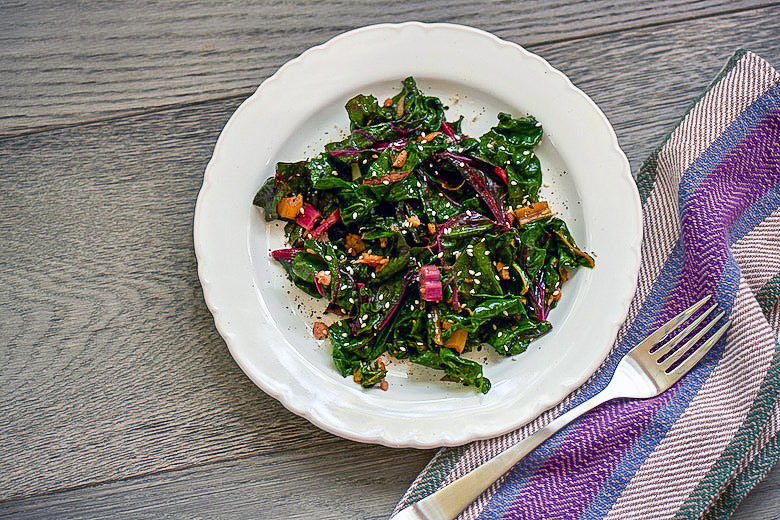
The thyroid, a little butterfly-shaped gland in our neck, is our “master gland of metabolism.” Its job is to produce thyroid hormones that play a significant role in energy production and metabolism. These vital hormones have far-reaching effects throughout our bodies.
The thyroid is highly nutrient-dependent and unfortunately, nutrition sometimes is overlooked as an impactful therapy that can support its function and prevent imbalances. People eating the “Standard American Diet” can become deficient in key nutrients necessary for driving thyroid hormone production.
Over time, nutritional deficiencies and other health and lifestyle factors may contribute to hypothyroidism, or an underactive thyroid. Symptoms of hypothyroidism include fatigue, weight gain, cold hands and feet, depression and hair loss, among other issues. It’s estimated that more than 90 percent of people with hypothyroidism have the autoimmune form called Hashimoto’s thyroiditis, and with that comes increased systemic inflammation.
Here are five key ways that nutrients play a role in helping the thyroid do its job: ![]()
- Iodine and the amino acid tyrosine provide the raw materials for creating thyroid hormones. Iodine is found primarily in seafood, sea vegetables and iodized salt, while tyrosine is ample in most animal protein sources.
- Inactive thyroid hormone (T4) is converted to active thyroid hormone (T3) through a biochemical reaction that relies on magnesium, iodine, iron, selenium, zinc, tyrosine, thiamin and vitamins A, B12, C, D and E.
- The mineral selenium can help lower thyroid peroxidase (TPO) antibodies that can cause inflammation and damage to the thyroid.
- The thyroid is highly sensitive to environmental toxins. Nutrient-dense, antioxidant-rich foods support the body in detoxifying harmful substances — pesticides, heavy metals and endocrine disruptors such as bisphenol-A, aka BPA — that may compromise thyroid function.
- Phytonutrients found in a wide variety of nutrient-dense foods, such as berries, green tea, ginger, turmeric, sweet potatoes, walnuts and even cruciferous vegetables (broccoli/cabbage family), can help calm inflammation that may be caused by Hashimoto’s thyroiditis. Cruciferous vegetables sometimes get a reputation for being bad for the thyroid because they contain goitrogenic compounds that have been shown in animal studies to inhibit iodine uptake by the thyroid gland. According to the Linus Pauling Institute, increased consumption of cruciferous vegetables does not appear to increase the risk of hypothyroidism unless accompanied by iodine deficiency. While many countries around the world may be iodine deficient, the U.S. is considered to be iodine sufficient. The nutritional benefits of cruciferous vegetables are far too great to cut them out of the diet completely. While cruciferous vegetables can be safely consumed raw, the best way to counteract goitrogens is to cook them so that they are deactivated.
A Recipe for Thyroid Health
Dark greens such as Swiss chard are among the most nutrient-dense foods we can eat. They provide a rich source of many vitamins and minerals that support thyroid hormone production. The recipe below will help you get more thyroid-benefiting nutrients into your diet.
Garlicky Swiss Chard with Sesame Seaweed Sprinkle
Serves 2 to 3
Ingredients
- 1 bunch or approximately 6 to 8 leaves of Swiss chard
- 2 tablespoons coconut oil or ghee
- 2 tablespoons minced fresh garlic
- 1 tablespoon reduced-sodium tamari soy sauce or coconut aminos
- 2 teaspoons brown rice vinegar
- 2 tablespoons Sesame Seaweed Sprinkle (recipe below)
Directions
- Separate the stem of the chard from the leafy portion. Thinly slice the stems and set aside.
- Cut the chard leaves in half, stack and tightly roll together. Chop into 1-inch pieces.
- Heat oil or ghee in a medium-sized sauté pan over medium-high heat and sauté sliced stems with garlic for 2 minutes.
- Add chopped leaves and sauté for 3 to 4 minutes until they become wilted and vibrant green.
- Turn off heat and season with tamari or coconut aminos and brown rice vinegar.
- Plate and garnish with Sesame Seaweed Sprinkle.
Sesame Seaweed Sprinkle
This simple condiment is a great substitute for table salt and a must-have on every kitchen table for thyroid health. It’s a uniquely wonderful source of iodine, iron, selenium and zinc. I find it goes well on sautéed greens, steamed or roasted vegetables, avocado toast and spaghetti squash.
Makes approximately 1 cup
Ingredients
- 1 cup sesame seeds
- 2 to 3 tablespoons kelp granules or dulse flakes*
- 2 teaspoons sea salt
- 1 teaspoon granulated garlic
Directions
- Toast sesame seeds in a dry skillet over medium heat for 2 to 3 minutes. Set aside to cool.
- Stir together kelp granules or dulse flakes, salt and garlic together in a small bowl. Add cooled sesame seeds and stir well.
- Transfer to a small jar with a lid and store for up to 6 months with other spices or on the kitchen table.
*Note: These can be found at most natural food stores in the international food aisle or near the spices.


